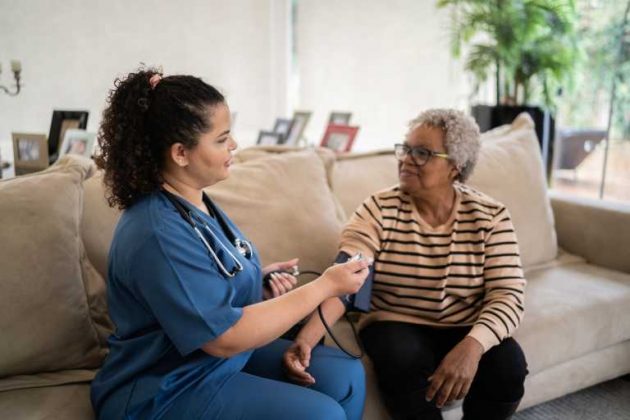
By Mia Haney
We’ve heard the saying “home is where the heart is,” and that certainly resonates when it comes to receiving healthcare. Our homes offer a sense of purpose, security and comfort. This feeling of safety and security allows individuals to express their healthcare needs with openness, which gives caregivers the ability to provide the best services possible. Individuals, in fact, report a greater quality of life with in-home care and have 50% fewer annual doctor’s visits, according to an article in Senior Living.
With the increase in healthcare costs, where care occurs and consumer preference have grown in importance, makes healthcare systems, payers and CMS take notice. These providers and others want to ensure that services match the individual’s health and environmental needs, a study in BMC Geriatrics pronounced. Further, the World Health Organization’s report on Aging and Health stated the value environmental factors play in the role of enhanced functioning ability when an individual lives in an environment that meets their needs; for many, that environment is home. Being home is also more cost-effective for individuals and CMS, a study in the Office of Policy Development and Research found.
The right type of personal care services must be in place to ensure appropriate and quality care is given in the home. This means offering a variety of services designed to scale and connect to an individual’s needs, such as improving activities of daily living or addressing social determinants of health. Social determinants play a significant role in health outcomes and include food insecurity, poor quality housing, lack of transportation, and low or fixed income.
Types of home care services
Home care services are designed to support healthcare modalities offered by primary care providers, specialists and clinics. Below are a few supportive care offerings that can make a significant difference in the lives of individuals:
1. Remote monitoring. Digital healthcare platforms are becoming easier to navigate for older adults, and thus becoming a viable home care solution. Detecting falls, checking vitals, and even managing medication are ways individuals can stay in their homes and be closely cared for through technology. The data often is available in real-time, meaning the information is the individual’s current state of health. Health trends can be followed and brought to the attention of healthcare professionals, who can use the information to intervene when needed and reduce costly visits to the hospital. This information can include reminders to take medication or changes in blood pressure, which can indicate potential heart issues. Catching early warning signs to help providers deliver better care and outcomes also meets CMS’ requirements for value-based programs. Research from the National Library of Medicine says it best: “Findings indicate that a health monitoring system designed for older adults can and will be used for an extended time and may help older adults with chronic conditions reside longer in their own homes in partnership with the healthcare system.”
The future of home care
By utilizing remote monitoring, personal care, companionship and nutritional meals, many individuals can remain in their homes and live independently. And with more older adults requesting to stay in their homes–and the resulting positive health outcomes and financial incentives that come with it–health plans will need to be equipped to produce even more home care offerings designed to meet the needs of this population.
Mia Haney is Chief Operating Officer at Modivcare Home.
SHARE
Subscribe to receive our latest blog articles delivered straight to your inbox.
RESOURCES